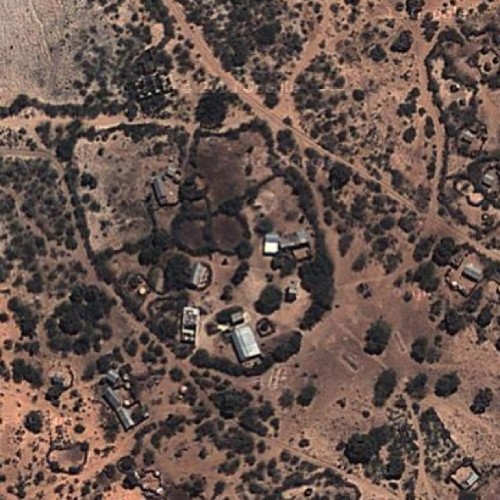
Funded by NASA and developed at Carnegie Mellon’s Robotics Institute, “Big Signal” was a web interface that let students experience Antarctica via Nomad – a robot prototype that searched for meteorites. The project was deployed to the Carnegie Museum of Natural History, as well as to several middle and elementary schools. Coppin says that the goal of the project was to “place students in a real scientific setting by giving them access to the same data that a scientist would access.”
More here.

James Bridle repurposes photos taken by unmanned aircraft, in the form of an Instagram account dedicated to drone’s-eye views and captions detailing U.S. drone strikes.
This is a quadcopter with a little Halloween modification. To see more of his work go here.

At the Electrical Exhibition of 1898, Nikola Tesla demonstrated a radio-controlled boat, an invention that he patented the year prior. The boat itself was powered by several large batteries, and used a new type of radio-activated switch that Tesla had invented.
More here.

Artist (and former STUDIO for Creative Inquiry research fellow) Frank Garvey describes “Humper” as a “robotic whore”. He says that a 20,000 volt stungun circuit is embedded in her “genitals”, and that “she knows how to sell it but she don’t come cheap”. It’s worth noting that Version 2 of the robot began at Carnegie Mellon University in 1999.
More here.
Video of “Humper” in action.

The Tweetbots are cardboard robots that travel in straight lines. They depend on the help of pedestrians in order to get to their destination. According to creator Kacie Kinzer, not one Tweenbot was lost or damage. This points to our capacity to empathize with personified, non-living objects. I wonder if the project would have been as successful with faceless robots.
More here.

Ars Electronica created an intricate light show using quadcopters. Their use of coordinated motion created an ethereal mood that would confuse and wow the audience.
More information here.

After Bart Jansen’s cat died he had it taxidermied and then transformed into a flying cat. This simple and admittedly sad use of a quadcopter is a comical way to approach topics of life and death and relationships between humans and animals.
More information here.
Festo is an automation company with roots in the automotive industry, and they have several really cool side projects as part of their Bionic Learning Network Program. One of these projects is their mechanical jellyfish, the AquaJelly, which imitates a jellyfish’s motion in water.
More here..
This particular piece is inspiring because its artist essentially designed and built this velociraptor in his garage by himself, whereas many of the pieces reviewed on this blog have been big, high tech group projects. These are only the motion tests for how it moves and walks when being preformed, later Silva went on to create an artificial skin for the beast, but there is certainly beauty in the honesty and simplicity of the skeleton alone.
More here..






